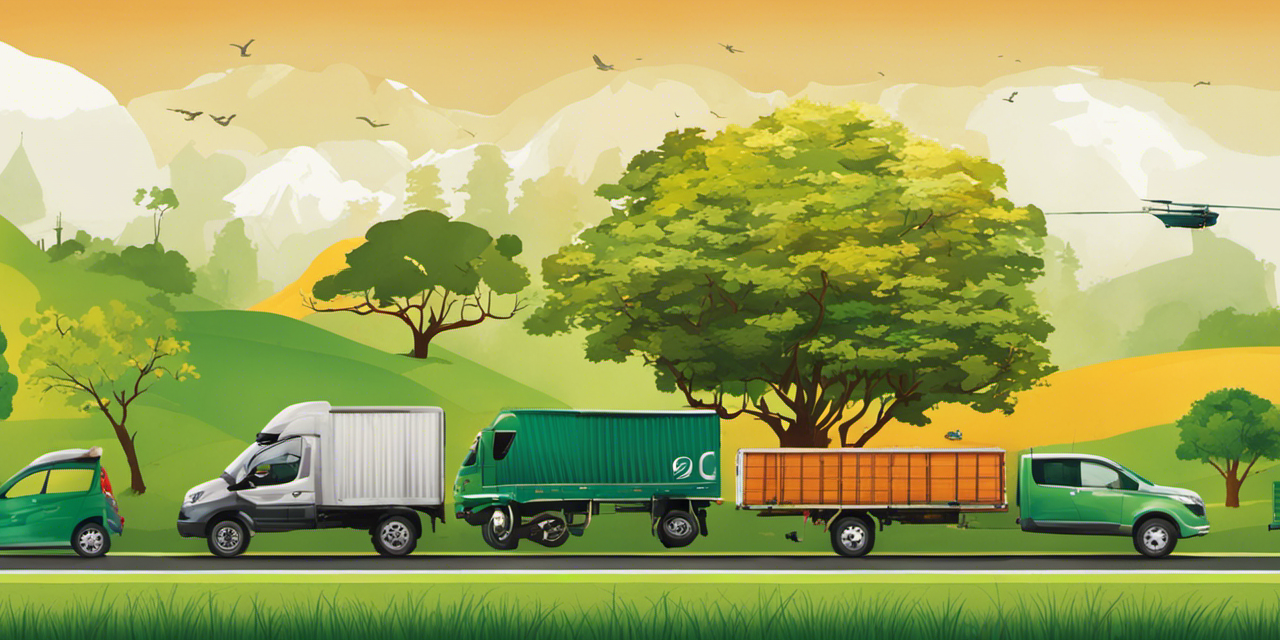Moving house can often be taxing and, at times, overwhelming. But have you ever considered the potential ecological impact of your move? Eco-friendly moving is not only possible, but it's ever more critical in today’s environmentally conscious world. By employing a few practical, environmentally friendly moving tips and using sustainable storage solutions, you can significantly lessen the environmental footprint of your move.
Introduction to Eco-Friendly Moving and Its Importance
Relocating to a new home is an inevitable part of our lives. However, the process can generate substantial waste and pollution. We can alleviate this by adopting an eco-conscious approach to our moving practices. Applying an eco-friendly moving mindset is not only beneficial to the environment; it can also lead to cost-saving opportunities. More importantly, it contributes to the global efforts of conserving our natural resources and reducing carbon emissions.
Definitions:
- Eco-Friendly Moving: refers to the process of relocating to a new home by implementing environmentally-friendly practices aimed at reducing waste and pollution, saving money, and conserving resources.
Why is it important?
Moving house typically involves plenty of packing materials, transportation, and energy—all of which have substantial implications on the environment. By choosing sustainable options in all of these aspects, we can significantly reduce the environmental impact of our move. Ensuring our moving practices are sustainable is a responsible, considerate approach that benefits not only us but also the environment and future generations.
By consciously implementing eco-friendly moving tips and opting for sustainable storage solutions, we can make our move 'green'. This means our relocation process becomes a part of the solution to environmental problems, rather than contributing to it. So while it may seem like a small step in the grand scheme of things, remember – a journey of a thousand miles begins with a single step.
In the next sections, we delve into the benefits of adopting sustainable moving practices, provide practical tips for eco-conscious packing, and discuss effective sustainable storage solutions. So let's dive in and discover how we can turn our next move into a green relocation!
Benefits of Implementing Sustainable Moving Practices
Eco-friendly moving practices offer a plethora of advantages beyond just environmental stewardship. There are efficacy and economic gains to be realized with these methods. Here are the primary benefits you can expect when you adopt sustainable moving:
-
Cost Saving: By adopting a sustainable approach, you will minimize waste, resulting in significant savings. Through efficient use of resources and avoiding unnecessary purchases, you get to save money which can be utilized elsewhere in the relocation process.
-
Environment Conservation: A green relocation reduces the amount of waste ending up in landfill sites hence less pollution. Sustainable practices decrease the overall amount of waste generated and, therefore, preserve our environment.
-
Natural Resource Preservation: Green moving practices contribute significantly to the conservation of natural resources. By limiting the amount of non-reusable packing materials, you help reserve resources such as energy, water, and raw materials.
This table outlines the benefits:
| Benefit | Application |
|---|---|
| Cost Saving | Minimizes waste and prevents unnecessary purchases |
| Environment Conservation | Reduces the amount of waste in landfills and prevents pollution |
| Natural Resource Preservation | Conserves natural resources such as water, energy, and raw materials |
Adopting these sustainable moving practices has far-reaching benefits that extend beyond the moving phase, contributing long term to a green lifestyle.
Essential Eco-Friendly Packing Tips for an Environmentally Conscious Move
As a significant part of the moving process, packing can either make or break your sustainable moving efforts. Below are some vital tips to make your packing process greener:
-
Use Green Packing Materials: To stay true to your eco-friendly moving efforts, utilize materials such as recycled boxes, packing peanuts that are biodegradable, and paper crafted from recycled materials. Steer clear from single-use plastics like bubble wrap and plastic wrap that take a long time to decompose and harm the environment.
-
Efficient Packing: The number of boxes used during packing can dramatically be reduced by efficient packing. Use everyday household items such as towels, bed linens, and clothes as padding for fragile items. This will help save on buying additional packing materials. In addition, make good use of your bags and suitcases to pack clothes and other items.
-
Declutter and Donate: Before embarking on your packing journey, take time to declutter and let go of items that you no longer need. Donating these items can help reduce waste and positively contribute to the community.
Here's a brief summary in the form of a table:
| Eco-friendly Packing Tips | Description |
|---|---|
| Use Green Packing Materials | Employ eco-friendly materials like recycled boxes and biodegradable packing peanuts |
| Efficient Packing | Use household items such as towels and clothes as padding to minimize the use of packing materials |
| Declutter and Donate | Contribute to reducing waste by donating items you no longer need |
By adopting these tips, the most wasteful moving process can be turned into an avenue for contributing towards a greener planet.
Sustainable Storage Solutions for Green Relocation
A crucial part of an eco-friendly move is the selection of sustainable storage solutions. Opting for durable, reusable, and aesthetically pleasing storage solutions contributes positively to your green moving. Here are some sustainable storage solutions worth considering:
-
Storage Boxes: Consider using storage boxes made from eco-friendly materials such as recycled plastic and bamboo fibre. Not only are these materials sustainable, but the boxes also offer a durable solution that can be reused in subsequent moves or for storage purposes. The stackable design of these boxes also saves space and makes transportation easy.
-
Storage Baskets: Instead of resorting to single-use plastic bags, storage baskets made from natural materials like bamboo, rattan, and seagrass offer a sustainable solution. These baskets are long-lasting and can be used for various storage needs in your new home.
-
Stackable Storage Units: These are versatile storage options made from materials like bamboo fibre and recycled plastic. The modular design of these units allows for customization as per your storage needs, thus enhancing efficiency during the move.
- Storage Cabinets and Racks: Storage cabinets and racks made from sustainable materials like bamboo provide reliable and elegant storage solutions. They are long-lasting and suitable for organizing your belongings in your new home.
These options resonate with the continuous need to reduce waste and pollution during the move. Here's a quick summary:
| Storage Solution | Role |
|---|---|
| Storage Boxes | Provide durable, reusable and stackable storage |
| Storage Baskets | Offer natural, reusable and versatile storage |
| Stackable Storage Units | Enhance efficiency with a modular and customizable design |
| Storage Cabinets and Racks | Serve as long-lasting and elegant solutions |
Ideal sustainable storage solutions should not only serve the immediate moving needs but also cater to long-term storage needs in your new home. Opting for such solutions will contribute significantly to the overall success of your green move.
Conclusion: The Impact of Sustainable Moving and Future Steps
Implementing eco-friendly moving practices is not just about saving the environment but also plays a significant role in conserving your financial resources and uplifting your community. By using sustainable materials and eco-friendly practices, you help create a healthier world for future generations.
Here are some actionable next steps you can take to ensure a more sustainable move:
-
Create an Eco-Friendly Moving Plan: Start by devising a plan that includes a checklist of tasks along with a timeline. This will help you stay organized and avoid any last-minute shopping that often results in unnecessary waste.
-
Opt for Green Transportation: Leverage sustainable transportation modes such as public transport, bikes, or electric vehicles to reduce your carbon footprint.
-
Minimize Energy Consumption: Ensure all electronics and lights are turned off when not in use. Consider using energy-efficient appliances and LED light bulbs in your new home.
-
Proper Disposal and Recycling: Dispose of items correctly by recycling, donating, or using designated waste disposal areas.
-
Choose a Green Moving Company: Work with a moving company that values sustainable practices. They should use electric vehicles, reusable packing materials, and ensure responsible waste disposal.
Here's a summary of these steps:
| Future Steps | Description |
|---|---|
| Create an Eco-Friendly Moving Plan | Draw up a detailed plan with timelines and a checklist of all tasks |
| Opt for Green Transportation | Use sustainable transport to reduce your carbon footprint |
| Minimize Energy Consumption | Use energy-efficient appliances, turn off unused electronics |
| Proper Disposal and Recycling | Dispose of items correctly by recycling, donating, or using designated waste disposal areas |
| Choose a Green Moving Company | Find a moving company that uses sustainable practices |
Making a move may be overwhelming, but by incorporating these sustainable practices, your transition can be smooth, cost-effective, and green. Ultimately, your eco-friendly relocation efforts will contribute positively to the environment, your finances, and the community.





